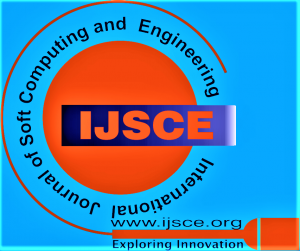![]()
Developing an In-Depth Framework for Enhancing Real-Time Applications Via Blockchain Technology Implementation
Neel Shah1, Abbas Rajpurwala2, Zeeshan Tamboli3, Pradnya Patil4, Nishith Suvarna5
1Neel Shah, Department of Computer Engineering, K.J. Somaiya Institute of Technology, Mumbai (M.H), India.
2Abbas Rajpurwala, Department of Computer Engineering, K.J. Somaiya Institute of Technology, Mumbai (M.H), India.
3Zeeshan Tamboli, Department of Computer Engineering, K.J. Somaiya Institute of Technology, Mumbai (M.H), India.
4Pradnya Patil, Assistant Professor, Department of Computer Engineering, K.J. Somaiya Institute of Technology, Mumbai (M.H), India.
5Nishith Suvarna, Department of Computer Engineering, K.J. Somaiya Institute of Technology, Mumbai (M.H), India.
Manuscript received on 27 October 2024 | Revised Manuscript received on 19 November 2024 | Manuscript Accepted on 15 November 2024 | Manuscript published on 30 November 2024 | PP: 11-19 | Volume-14 Issue-5, November 2024 | Retrieval Number: 100.1/ijsce.F365514060124 | DOI: 10.35940/ijsce.F3655.14051124
Open Access | Editorial and Publishing Policies | Cite | Zenodo | OJS | Indexing and Abstracting
© The Authors. Blue Eyes Intelligence Engineering and Sciences Publication (BEIESP). This is an open access article under the CC-BY-NC-ND license (http://creativecommons.org/licenses/by-nc-nd/4.0/)
Abstract: This paper presents a comprehensive examination of distributed networks, their architectural models, and applications across the domains of communication, computing, and data storage. It begins by analysing various network types—clientserver, peer-to-peer, and hybrid models—highlighting the significance of the client-server architecture in distributed systems and recent advancements within its multiple frameworks. Realtime applications, such as e-learning chat systems and web interfaces, are examined to illustrate the impact of distributed networks on modern communication. For practical implementations, programming methods for banking web applications are detailed, utilising technologies such as HTML, CSS, JavaScript, React.js, Java, C#, and Python. The paper delves into security threats and algorithms essential for distributed systems, exploring blockchain technology, decentralized identity management systems, and web scalability. Blockchain applications, including cryptocurrencies and supply chain management, are discussed, along with their associated benefits and challenges. Furthermore, the role of decentralised identity systems in enhancing privacy and identity verification is analysed, as is the importance of regulatory compliance in financial systems. Technologies such as RDAP and smart contracts are highlighted for their potential to integrate with regulations. The paper concludes with an emphasis on automated customer support services (ACSS), advocating for customer-centric frameworks to enhance user satisfaction in distributed systems.
Keywords: Decentralized Identity (DID), Data and Privacy, Blockchain, Web Application, Cloud Computing, MVC, Digital Finance; Blockchain; Asset Management Modularization, Smart Contract, Design Science Research.
Scope of the Article: Network Security
